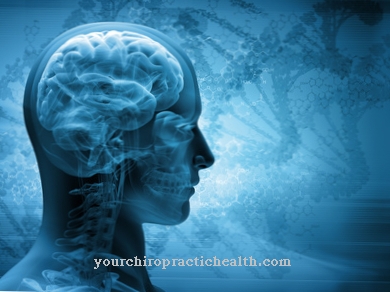The traditional Chinese Qi Gong combines practices of concentration, movement and meditation to bring body and mind into harmony and to regulate the body's qi flow, i.e. the flow of vital force.
While Qi Gong at the intermediate level is primarily intended to increase well-being and balance, Qi Gong at the basic level is a medical therapeutic practice that is intended to have a preventive and curative effect in chronic and acute illnesses. Although the value of Qi Gong in Germany is not that of a medical branch of its own, clinical studies have now confirmed the beneficial effects of the practices on blood pressure, psychological problems and heart and lung dysfunction.
What is Qi Gong?

Traditional Chinese Qi Gong combines the practices of concentration, movement and meditation to bring body and mind into harmony.
Qi Gong is a traditional Chinese practice with elements of concentration, movement and meditation, which aims to bring body and mind into harmony in order to strengthen personal wellbeing. In addition to breathing and movement exercises, Qi Gong pursues meditative concentration exercises that are intended to regulate the flow of Qi in the body.
Qi is synonymous with vital physical strength and is particularly associated with healing effects. The Zhuangzi already indicates individual forms of Qi Gong, but various silk images from the Han dynasty also show Qi Gong practitioners. The Daoist Xu Xun used the term Qi Gong for the first time in the Jin period, which he associated with martial arts exercises. Qi Gong practices have always been used for health care within China.
In Daoism and Buddhism, this health care was combined with religious and spiritual rituals, and it was pursued in particular within monastic communities. In the 50s, the doctor Liu Guizhen coined the term Qi Gong for special health exercises. He used traditional techniques to stabilize the body's own energy balance and in this way fight diseases. Qi Gong practices for the medical field are also called Qi Gong of the basic level, while those of the intermediate level are supposed to promote the general balance of the person.
Function, effect & goals
The practices from the basic level of Qi Gong can be used to combat various diseases. A total of around 60,000 different exercises are now available. Qi Gong can be used against asthma as well as rheumatism, cancer and symptoms of menopause or multiple sclerosis. The exercises develop their effectiveness especially when they are performed regularly.
The basic principle of all exercises and practices is the purification and regulation of mind and body, which is to be made possible by special movement sequences and which is considered in traditional Chinese medicine as a solid basis for any kind of healing. Although the general effectiveness of the practices against most individual illnesses is still controversial, there is now at least agreement about the relaxing effects of Qi Gong. Modern medicine also knows that psychological and physical stress aggravates many illnesses or even takes on positions that cause illness. In this context, Qi Gong is used preventively and curatively in chronic, but also acute illnesses.
Walking exercises and massages are just as much a part of the traditional Qi Gong practices as whole sequences of movements and figures. Practices such as "walking with the heart", "walking through the lungs" or "walking through the kidneys" are intended to derive pathological Qi from the respective organ systems. In the same scheme there are lung, heart or kidney massages, but also liver massages and stomach massages. These and similar massage exercises are particularly associated with a harmonizing effect. The figures with the Qi Gong stick are also very popular.
These are whole sequences of exercises that are carried out with a wooden rod and are supposed to have regulating properties. An equally popular sub-form of Qi Gong is Yun Hua Gong, which is one of the oldest forms of Qi Gong therapy and is supposed to maintain, transform and derive Qi. The Yun Hau Gong is divided into three basic exercises, which are intended to serve both general health care and the treatment of serious illnesses.
In addition to back and joint pain, Qi Gong is used today in particular against chronic respiratory diseases, cardiovascular diseases, circulatory and blood pressure disorders, digestive problems as well as metabolic disorders and headaches. The practices are also currently used to support the immune system, to improve coordination after accidents or strokes and to regulate depression, restlessness or sleep disorders.
You can find your medication here
➔ Medicines for relaxation and nerve strengtheningRisks, dangers & special features
Although Qi Gong is a recognized medical practice in China, in the western world, and especially in Germany, it is understood more as a relaxation practice and, if necessary, an alternative medical procedure. Clinical studies have now also confirmed healing effects in some contexts.
For example, according to a study, Qi Gong has been able to reduce depression in women under radiation therapy.For this reason, the German Cancer Aid recommends the practice today, for example as an accompanying therapy to conventional medical chemotherapy. In addition, more than 20 clinical studies have confirmed the positive effects of the exercises on blood values. For example, an increased number of lymphocytes and a lowering of cholesterol were observed in practicing study participants.
An increase in heartbeat volume as well as a decrease in systolic and diastolic blood pressure have meanwhile been proven by clinical studies. With regard to lung function, an expiratory vital capacity and an expiratory one-second capacity were observed. The main reason for these effects is the stress-reducing effect of the traditional Chinese practice, which influences the nervous system as well as the endocrine system and the immune system. The practice is in no way associated with risks and side effects for the practitioner.



























